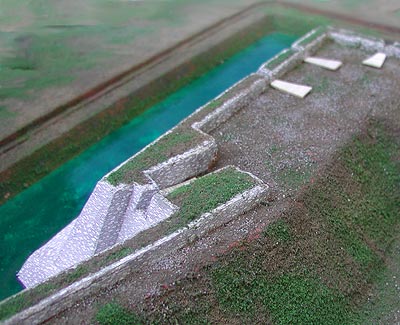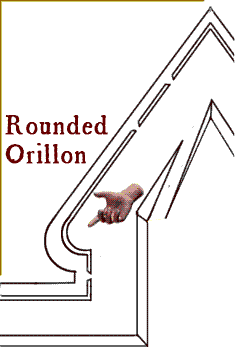 |
Bastions With 'Ears' |
Orillons, Italian for "ears," could be added to masonry forts because firm walls of masonry could physically support such architectural features on the bastion. You can see where the name comes from by the way they stick out from the sides of the bastion.
 |
|
To
see specifically the orillon itself,
click here Click here to have another view of the orillon. Then, to return to the original picture, double click the link |
|
Orillons came in two styles: squared-off end as seen in the model above or a rounded end as seen at the left. Each style was a good as the other for protection, and which was employed was a matter of taste for the architect or engineer. Rounded versions tended to be most frequently seen on Italian forts. To further protect the cannon and its crew behind an orillon, the platform for that gun could be lower down in the bastion than the gun platforms elsewhere on the bastion. This is illustrated in the model above. |
Orillons were usually constructed at both sides of a bastion, where the flanks met the ramparts. This feature allowed the cannons for those positions to be set back into the bastion, with a curtain of masonry jutting out to help shield the cannon and crew from besieger's fire. While the enemy could pick off other cannon arrayed along the outer sides of the bastions, those cannon tucked back behind the protecting orillons were out of sight from the front and hence out of the line of fire. They were tough nuts to crack.

| Back |
Gated Communities |
|
|
|